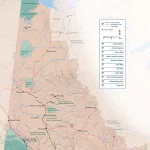The Average Canadian and Their Television Habits
This statistic suggests that Canadians spend much time watching TV, with the average person tuning in for approximately 30 hours per week. This equates to over four hours of television viewing each day. While some may see TV as a way to unwind and relax after work or as entertainment, excessive screen time can negatively affect physical and mental health. It’s essential to balance leisure activities like watching TV and engaging in more active pursuits that promote good health, such as exercise or spending time outdoors. Additionally, limiting screen time before bedtime may be a good idea to ensure a restful night’s sleep.
